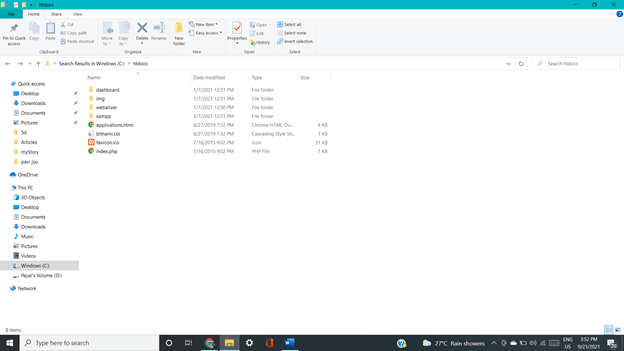

MariaDB is a drop in replacement for MySQL, created by the original author of MySQL. You can now try to deploy phpMyAdmin on dedicated hosting from Atlantic.Applicable Plans - All CentOS 7 Cloud Hosting Plans MariaDB and phpMyAdmin Overview You can now use phpMyAdmin to interact with MySQL and perform several tasks via a web browser.
Phpmyadmin mariadb how to#
In this post, we explained how to install phpMyAdmin on Arch Linux. You should see the phpMyAdmin dashboard on the following screen:
Phpmyadmin mariadb password#
Provide your MySQL root user and password and click on the Login button. Now, open your web browser and access the phpMyAdmin web interface using the URL You should see the phpMyAdmin login page:

Save and close the file, then restart the Apache service to apply the changes: systemctl restart httpd Step 8 – Access phpMyAdmin Web Interface Save and close the file, then create an Apache virtual host configuration file: nano /etc/httpd/conf/extra/nfĪdd the following lines: Alias /phpmyadmin "/usr/share/webapps/phpMyAdmin" Uncomment the following line: LoadModule mpm_prefork_module modules/mod_mpm_prefork.soĪdd the following lines: LoadModule php_module modules/libphp.so Next, edit the Apache default configuration file: nano /etc/httpd/conf/nfĬomment out the following line: #LoadModule mpm_event_module modules/mod_mpm_event.so Save and close the file when you are done. nano /etc/webapps/phpmyadmin/Ĭhange the following line: $cfg = 'My_Secret' Next, edit the phpMyAdmin configuration file and define the blowfish secret. You can install it with the following command: pacman -S phpmyadmin Step 6 – Install phpMyAdminīy default, the phpMyAdmin package is included in the Arch Linux default repository. Save and close the file when you are finished. Once PHP is installed, edit the PHP configuration file: nano /etc/php/php.iniĪdd the following lines to enable the required extensions: extension=bz2.so You can install it with the following command: pacman -S php php-apache Next, you will also need to install PHP on your server. Next, run the following command to secure the MySQL installation and set the root password: mysql_secure_installationĪnswer all the questions as shown below: Switch to unix_socket authentication Y Next, start and enable the MySQL service using the following command: systemctl enable mysqld Once MySQL is installed, initialize the MySQL database with the following command: mysql_install_db -user=mysql -basedir=/usr -datadir=/var/lib/mysql You can install it with the following command: pacman -S mysql Next, you will need to install the MySQL database server on your server. You can verify the Apache status using the following command: systemctl status httpd Step 4 – Install MySQL Server Once Apache is installed, start and enable the Apache service with the following command: systemctl start httpd You can install it using the following command: pacman -S apache
Phpmyadmin mariadb update#
Save and close the file, then update all the package indexes with the following command: pacman -Syu Step 3 – Install Apache Web Serverįirst, you will need to install the Apache web server package on your server. Remove all lines and add the following lines: # Score: 0.7, United States You can do it by editing the mirrorlist configuration file: nano /etc/pacman.d/mirrorlist Step 2 – Configure Repositoryīy default, the default repository is outdated in Arch Linux, so you will need to modify the default mirror list. Connect to your Cloud Server via SSH and log in using the credentials highlighted at the top of the page. Create a new server, choosing Arch Linux as the operating system with at least 2GB RAM. Step 1 – Create Atlantic.Net Cloud Serverįirst, log in to your Atlantic.Net Cloud Server. A root password configured on your server.A fresh Arch Linux server on the Atlantic.Net Cloud Platform.In this post, we will show you how to install phpMyAdmin on Arch Linux. You can use phpMyAdmin to browse, create, edit and delete tables, as well as modify columns and data from the central place. It is designed for users who are not familiar with MySQL command line. It allows users to interact with MySQL and MariaDB via a web browser.

PhpMyAdmin is a management console for MySQL and MariaDB database.


 0 kommentar(er)
0 kommentar(er)
